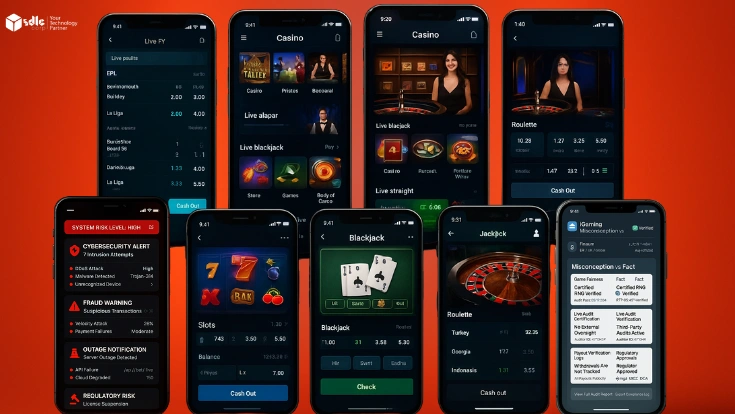Introduction
The popularity of Odoo, an open-source ERP platform, has surged over the past decade, enabling businesses to manage operations across sales, inventory, accounting, HR, and more. But beyond using Odoo as a business tool, there’s an exciting path for developers and entrepreneurs: starting your own Odoo community project.
This guide will walk you through the technical foundation, community building, and project governance you need to launch and sustain a successful Odoo community project. Whether you’re aiming to create a vertical solution, develop reusable Odoo addons, or simply give back to the ecosystem, this is your step-by-step blueprint.
1. Understanding Odoo Community Projects
What Is an Odoo Community Project?

An Odoo community project is a collaborative, open-source initiative built using Odoo’s modular framework. Typically hosted on GitHub for Odoo, these projects are developed by individuals or teams looking to solve industry-specific problems, improve Odoo’s core features, or contribute tools for broader community use.
Why Start One?

Address unmet needs through custom Odoo solutions.
Build a reputation in the Odoo development community.
Foster innovation through community contributions.
Collaborate globally with Odoo contributors.
Examples of Community Success

Odoo Community Association (OCA): Manages hundreds of Odoo modules and offers structured governance via Project Steering Committees (PSCs).
Localization projects (e.g., India, Brazil, Germany): Deliver tax, compliance, and language support for regional use.
2. Setting Up Your Project
Technical Prerequisites

Before launching, ensure you have:
A clean Odoo development environment (preferably Odoo 17 CE or higher).
Familiarity with Python, Odoo’s ORM, XML views, and QWeb templates.
Version control tools like Git and a GitHub account.
Creating Your First Odoo Module

Use the following scaffold to create your custom Odoo addon:
odoo-bin scaffold your_module_name addons/
Key files include:
__manifest__.py: Module metadata and dependenciesmodels/*.py: Business logicviews/*.xml: UI definitionssecurity/ir.model.access.csv: Access control rules
Test your module locally and push it to a public GitHub repository. This sets the foundation for community collaboration.
Structuring Your Repository

Use a clear directory layout:
/models,/views,/wizards,/dataInclude a README with module usage and contribution guidelines
Add a license (MIT, LGPL) to encourage safe reuse
Set up GitHub Actions for CI/CD if needed
3. Building the Community
Attracting Contributors

Share your project on Odoo forums, LinkedIn, Reddit, and Facebook groups
Use SEO-friendly blog posts and documentation that target keywords like “start Odoo project” or “build Odoo app”
Maintain an active GitHub repository with labeled issues for beginners
Communication Channels

Open a GitHub Discussions tab
Set up a Discord or Telegram group for real-time collaboration
Use Mailchimp or Substack for newsletters
Hosting Events

Organize virtual sprints or “addon of the month” showcases
Record demos and post on YouTube for exposure
Partner with other Odoo developers to co-host webinars
4. Project Governance
Creating a Project Steering Committee (PSC)

A PSC ensures long-term sustainability. Roles may include:
Lead Maintainer – oversees roadmap and code quality
Community Manager – manages outreach and support
Release Manager – handles versioning and publishing
Follow the model set by the Odoo Community Association by assigning clear responsibilities and documenting decision-making processes.
Contribution Guidelines

Add a
CONTRIBUTING.mdto your repo with:PR guidelines
Coding standards
Test coverage expectations
Include a Code of Conduct (use Contributor Covenant as a base)
Decision-Making & Transparency

Use GitHub for:
Voting on major changes (e.g., feature additions, governance shifts)
Documenting meeting notes and release plans
Publicly tracking issues and roadmaps
5. Collaboration & Contribution Workflow
GitHub Best Practices for Odoo

Use a branching model:
main,develop,feature/*,bugfix/*Label PRs clearly (e.g.,
fix:,feat:,docs:)Encourage small, frequent PRs for faster reviews
Managing Issues and Tasks

Create milestone-based backlogs
Use labels like
good first issue,high priority,needs reviewEngage users by asking for feedback on features or bugs
Documentation & Localization
Write docs using Markdown or Sphinx
Include installation steps, screenshots, and examples
Open your module for Odoo localization contributions (e.g., using Transifex)
6. Sustaining the Project Long-Term

Keeping Contributors Engaged
Recognize top contributors monthly
Send updates via newsletters or GitHub releases
Create a public roadmap to show your vision
Funding & Sponsorship
Use platforms like OpenCollective, GitHub Sponsors, or BuyMeACoffee
Offer perks to sponsors: branding, support, or early access
Long-Term Vision
Plan version upgrades in sync with Odoo’s major releases
Use feature flags to experiment safely
Archive unused or deprecated modules with clear notices
7. Security Practices for Community Modules
Security is a crucial component of any software project especially when building open-source modules for a wider audience. Community modules must be designed to prevent vulnerabilities, ensure user data protection, and comply with standard access control policies.
Common Security Risks to Avoid
SQL Injection: Always use Odoo’s ORM instead of raw SQL queries.
Improper Access Rights: Ensure that you define accurate permissions in
ir.model.access.csvand create appropriate record rules.Unvalidated User Input: Sanitize form inputs using Odoo field constraints or Python validators.
Best Practices
- Limit access to sensitive models using user groups and ACLs.
- Use
_check_*constraints to enforce business rules at the model level. - Regularly audit your module with Odoo’s security linting tools or tools like Bandit (Python).
By proactively implementing these practices, you protect not just your own module but the reputation and integrity of the wider Odoo community.
8. UI/UX Best Practices in Odoo
Creating technically functional modules is important, but equally crucial is ensuring that your Odoo UI is intuitive, clean, and user-friendly.
Frontend Design Guidelines
Use Consistent Views: Stick to Odoo’s standard view types (form, kanban, list, calendar) and design conventions.
Minimal Clicks: Structure forms and menus to minimize the number of clicks required to complete a task.
Use QWeb Wisely: Customize only where necessary. Overuse can create maintenance headaches.
Add Tooltips & Help Text: Use
helpattributes to improve usability.
Theming & Responsiveness
- Implement themes using Odoo’s backend theme options or custom SCSS in web modules.
- Ensure responsive layouts using Bootstrap-style grid systems.
Optimizing UI/UX ensures users not only use your module but love it.
9. Module Versioning & Backward Compatibility
Maintaining version consistency and ensuring backward compatibility is critical for long-term adoption of your Odoo community module.
Semantic Versioning
Use semantic versioning (MAJOR.MINOR.PATCH) to clearly communicate updates:
1.0.0: Initial stable release1.1.0: Feature addition, backward-compatible2.0.0: Major breaking changes
Deprecation Policy
Mark deprecated features in the README or a
CHANGELOG.mdfile.Warn users in advance and provide alternatives.
Compatibility Tags
- Add compatibility badges in your README (e.g., ” Compatible with Odoo 16 & 17″).
- Use GitHub tags like
odoo-17,odoo-16to make discovery easier.
Clear versioning and backward compatibility foster trust and easier onboarding for contributors and users alike.
Conclusion
Starting an Odoo community project is more than building software it’s about creating an ecosystem that thrives on transparency, innovation, and collaboration. Whether you’re developing a vertical app, enhancing Odoo’s usability, or building for localization, your efforts contribute to a larger movement in the open-source ERP space.
By laying the right technical foundation, establishing project governance, and nurturing a strong contributor base, your project can become a lasting part of the Odoo development landscape.
Need guidance or expert support in launching your Odoo community project?
Contact US we’ll help you take your vision from concept to community success.
Also Read:
FAQ's
What is an Odoo community project?
An Odoo community project is an open-source initiative where individuals or organizations collaborate to create custom Odoo modules or apps, often hosted on GitHub.
Can I start an Odoo community project alone?
Yes! Many successful projects begin with a single developer or small team. You can expand your contributor base over time by promoting and documenting your work.
What tools do I need to start?
You’ll need a working Odoo development environment, Python, Git/GitHub, and basic knowledge of Odoo module structure and views.
How do I get contributors for my project?
Use social platforms, Odoo forums, newsletters, webinars, and beginner-friendly GitHub issues to attract contributors.
How do I publish my Odoo module on GitHub or Odoo Apps?
To publish your module on GitHub, create a public repository and push your code using Git. Include a clear README, license file, and version tags. For Odoo Apps, log in to the Odoo Apps Store, go to “My Modules,” and upload a zip file of your module following their guidelines. Make sure your manifest file is properly filled out.
Do I need to register with Odoo or the OCA?
No. You can run your project independently. However, if you want broader visibility and structure, joining the Odoo Community Association (OCA) may help.
















